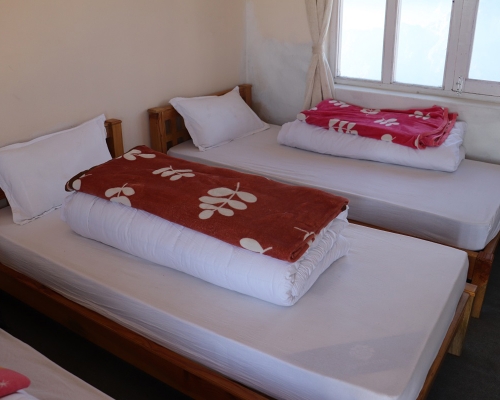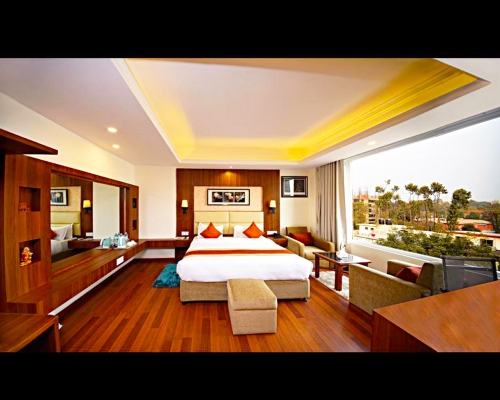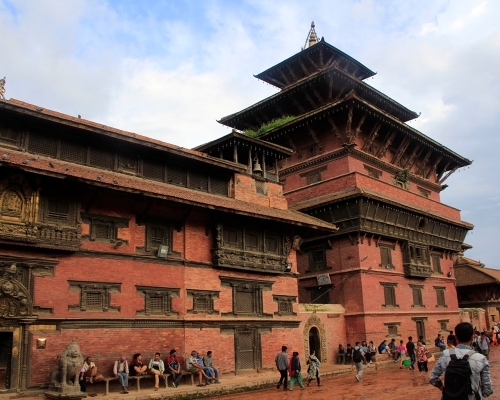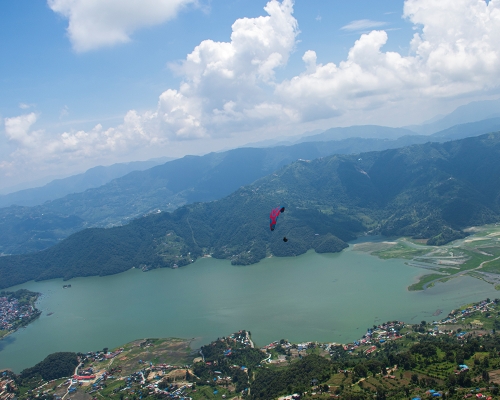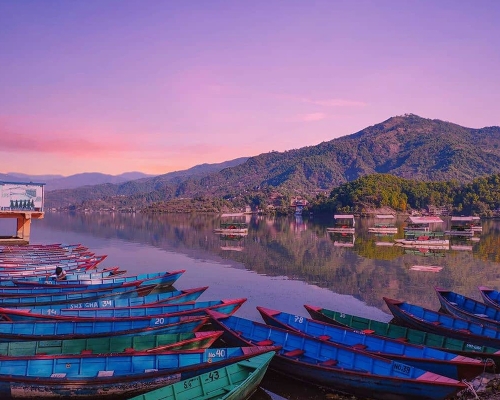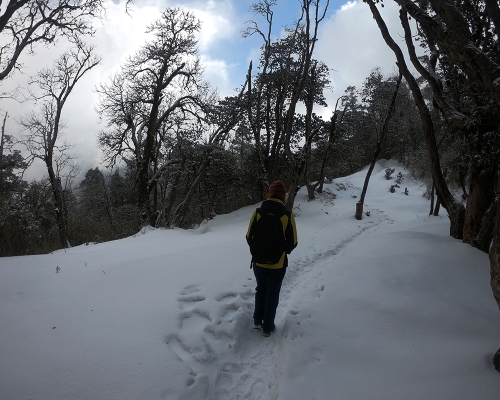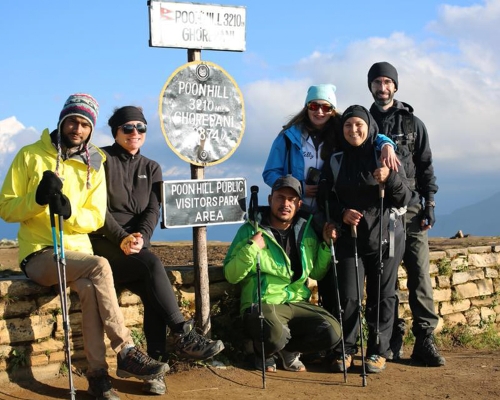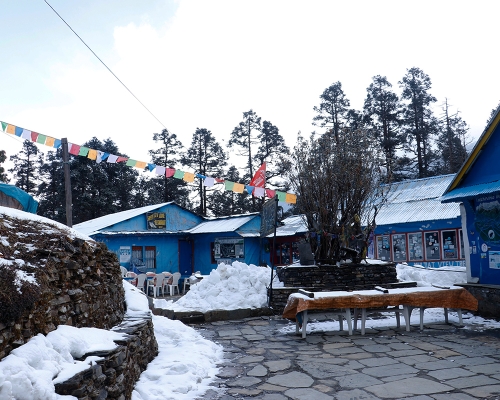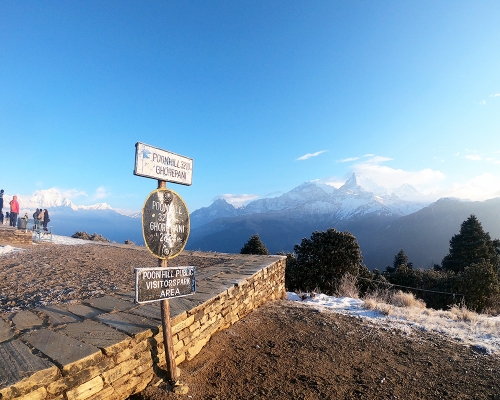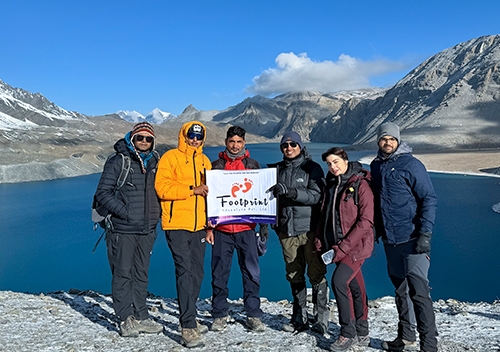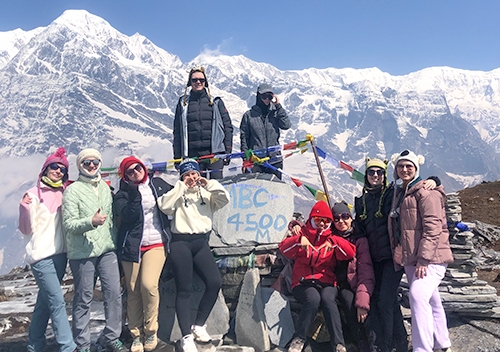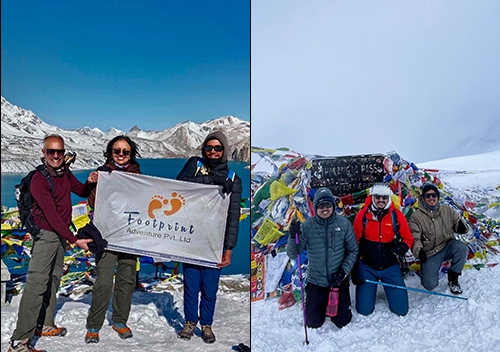Overview of Ghorepani Poonhill Trek
The Ghorepani Poonhill trek is one of the most popular and shortest trekking routes in the Annapurna region of Nepal. The Ghorepani Poonhill trekking route is most appropriate for anyone considering trekking in Nepal for the first time, including families, lone travelers, and groups of friends who are looking for the most accessible trek in Nepal, where they can still have an unforgettable himalaya memory. What makes this trek special is that the Ghorepani Poonhill trek passes through historic communities with dramatic and beautiful Himalayan ranges including Annapurna, Dhaulagiri, Lamjung Himal, Gangapurna, and Machhapuchhre towering above like a panorama.
The Ghorepani trek is known to be one of the easiest treks in the Annapurna region and has been popular since the late 20th century because of the short duration, easy access, and varied topography. The trail leads trekkers through rhododendron forests, terraced farmlands, and traditional Gurung and Magar villages, thus making it a perfect trek for trekkers of any age group.
The Ghorepani Poonhill trek Nepal is a wonderful trek for beginners while Nepal is known for its high-altitude treks such as the Annapurna Circuit or Everest Base Camp trek. This short Himalayan trek begins with a drive from Kathmandu to Pokhara. The most convenient option to start the Ghorepani Poonhill trek is from Pokhara rather than Kathmandu.
On the third day, we drive from Pokhara to Tikhedhunga and begin our hike. Ulleri, a typical Himalayan village, welcomes you with its iconic stone steps and mountain views. The next day, we hike to the well-known Ghorepani village, passing through lush forests and traditional settlements. On the fifth day, we hike early to Poonhill to witness one of the best Himalayan sunrises. From here, you’ll see panoramic views of Dhaulagiri (8,167m), Annapurna I (8,091m), Annapurna South (7,219m), Annapurna II, III, and IV, Machhapuchhre (6,993m), Tukuche, Nilgiri, Hiunchuli, and Lamjung Himal. This is the major highlight of the trek.
The Ghorepani Poonhill trek is easy and safe. At 2,028 meters, Ghorepani is the highest overnight stop, so there's no risk of altitude sickness, which usually starts above 3,500 meters. After this scenic morning, we descend to Tatopani, where you can enjoy a relaxing soak in the natural hot springs. We then head to Ghandruk, a large Gurung village, and finally descend to Nayapul. From there, we drive back to Pokhara and return to Kathmandu. Also known as the Annapurna sunrise trek, this route is a great option for those seeking a short and easy trek in Nepal.
The price of the Ghorepani Poonhill trek varies from USD 590 to USD 750 depending on your group size, duration of your stay and service level. Don't miss out on this easy and beautiful trip. Footprint Adventure has regular treks to the area. Feel free to contact us to customize your Ghorepani Poonhill trekking itinerary to experience the beauty of the Himalayas.
Highlights of the Ghorepani Poonhill Trek
- Witness one of the best Himalayan sunrises from Poonhill, with panoramic views of Dhaulagiri, Annapurna I, Annapurna South, Machhapuchhre (Fishtail), Hiunchuli, Nilgiri, and much more
- Walk through lush forests of blooming rhododendrons, oak trees, and bamboo trees, all of which are particularly beautiful in springtime
- Immerse yourself in the local culture and hospitality in traditional villages like Ulleri, Ghorepani, and Ghandruk
- Trek through diverse landscapes, from terraced farm fields to hilltop viewpoints and dense green forests
- Indulge in a natural hot spring at Tatopani after your trek
- Start your trek easily with a short drive from Pokhara, making this the easiest trek in Nepal
- Enjoy nature and wildlife, with many opportunities to see Himalayan birds and plants along the trail
- Visit Ghandruk village, a beautiful Gurung village with spectacular views of the mountains and amazing culture
Major Highlights of Ghorepani Poonhill Trek
Ghandruk Village
Ghandruk village is a culturally inhabited area of the Nepalese Gurung community. It is one of the most well-known overnight rest stops in the Annapurna region. Additionally, the community draws citizens from all across the country. Ghandruk offers a breathtaking view of the Annapurna Mountain ranges, which include Machhapuchhre and Himchuli. Ghandruk village is the most popular trekking destination in Nepal. The second Gurung village in Nepal, Ghandruk, is promoting rural tourism using its resources. Along with this, you'll fall in love with the untouched culture, rustic way of life, local food, welcoming atmosphere, and captivating vista of the sparkling Himalayas.
Poon Hill Viewpoint
Poon Hill Viewpoint offers breathtaking views of the Annapurna Himalayas, sunrises, sunsets, stunning landscapes, valleys, rivers, and conventional hamlet communities from its vantage point. Every day, hundreds of trekkers may be seen hiking Poon Hill to take in the vibrant sunrise. Poon Hill Viewpoint is one of the most popular viewpoints in Nepal due to its simple accessibility, brief stay, and plenty of natural beauty. The well-known Annapurna Base Camp Trek, the Annapurna Circuit Treks, and the Khopra Danda Trek are all connected by the Traditional Poonhill Trek.
Pokhara City
Pokhara, in western Nepal, is a major tourist city in the Annapurna Himalayas. It's a great place to view mountains, lakes, and other natural treasures. Annapurna Base Camp, Poonhill, Ghorepani, and Mardi Himal begin at Pokhara. Pokhara is also the starting point for most tourism, trekking, and adventure activities in Nepal, including boating, rafting, Annapurna trekking, paragliding, bungee jumping, ziplining, canyoning, and skydiving in Annapurna.
Trek Route Details and Alternatives
The Ghorepani Poonhill trek has several starting points, meaning that trekkers may have some flexibility based on time, fitness, and modes of travel. Birethanti, or Nayapul, is the most common and traditional starting point, being considered the official gate of the trek. After arriving at Nayapul, trekkers walk through a few small villages, namely Ulleri, Banthanti, and Nangethanti, and then to Ghorepani village, the official stop before heading up to Poonhill for sunrise.
There is another option that includes starting from Tikhedhunga. Many trekkers take the jeep from Pokhara to Tikhedhunga to avoid the long first day of walking, then trek from Tikhedhunga to Ulleri (which is an uphill two-hour walk), and then you can continue on the classic route to Poonhill via Ghorepani.
Some trekkers start from Ghandruk, which is a beautiful Gurung village, and then trek through Tadapani before arriving at Ghorepani. The trek is a little tougher on this route, since you will have to do a couple of steep uphill climbs and associated stone steps. However, it is possible to do both approaches; you can begin from Ghandruk and finish at Nayapul, or do it in reverse. You can also access Ghandruk by jeep or bus from Pokhara, but the road may be muddy during the rainy season
There is also a lesser-used route that begins from Australian Camp, accessible from Kande. It travels through forested trails before joining the main Poonhill trail. It is a quieter and more relaxing trek, a perfect choice for anyone wanting a different trek. Some trekkers choose to complete the Ghorepani Poonhill trek and continue with longer treks to Annapurna Base Camp or Annapurna Circuit so they can see more of the area while enjoying the famed Poonhill sunrise. Where you begin, every route eventually arrives at Ghorepani village, a welcome stop before the morning trek up to Poonhill (3,210m) for the breathtaking sunrises with views of the Himalayas.
Is This Trip the Right Choice for You?
You do not need to worry about your fitness or altitude sickness while you are on this trek because it is quite easy, short, and does not reach very high elevations. Anyone can easily do this trek, even those without any prior trekking experience. There is a good chance that the Ghorepani Poon Hill trek is the easiest and shortest trek in the Annapurna region of Nepal. Although the daily walking distance varies, it usually takes 4 to 6 hours to get from one town to the next. If you are mentally and physically fit, you will have a better chance of being successful.
How Difficult is Ghorepani Poonhill Trek and How Should I Prepare?
The easiest hike in Nepal's Annapurna region is possibly the Ghorepani Poon trek. It is considered easy to moderate and is one of the best options for beginners. The walking distance between settlements varies daily, but you often need to travel 4 to 6 hours per day. You can succeed if you are physically and psychologically healthy. It is a 4-day walking trip, but only the first two days are uphill through a rhododendron forest. The last two days are just downhill through a forest and villages. However, it still requires physical preparation.
Trekking Conditions
- Daily trekking hours: 4-7 hours
- Maximum altitude: 3,210m at Poonhill Viewpoint
- Steep Staircases: The trek from Tikhedhunga to Ghorepani involves climbing over 3,000 stone steps, which can be physically demanding
- Gradual ascents & descents: Unlike high-altitude treks, Poon Hill has a steady elevation gain
Physical Preparation:
- Cardio training: To build stamina, perform running, cycling, swimming, or fast walking at least 4-6 weeks before the trek. Cardiovascular fitness aids in maintaining energy on the ascents and long trekking days.
- Strength training: Focus on leg strength exercises like lunges, squats, step-ups, and calf raises to prepare your muscles for steep climbs, especially the stone staircases leading to Ghorepani. Core strengthening exercises like planks can also help with stability.
- Endurance building: Go on regular long hikes with a weighted backpack (5-7 kg) to simulate actual trekking conditions. This will condition your body to carry a load while hiking for several hours. Progressively increase your hiking distance and elevation gain.
- Flexibility & Balance: Incorporate stretching exercises or yoga into your routine to improve flexibility, reducing muscle soreness and enhancing mobility on uneven terrain.
This trek is achievable for most people with essential fitness, but advanced training will make the experience more enjoyable and help prevent muscle fatigue and exhaustion.
When is the Best season for the Ghorepani Poonhill Trek?
March and April in the spring, September, October, and November in the fall are the Best seasons for the Ghorepani Poonhill Trek. At that time, it is much less likely to rain, but it can get very cold at night, especially in November and March.
Choosing the right season is crucial for an enjoyable trekking experience, as the weather and trail conditions vary significantly throughout the year.
- Autumn (September to November) is widely considered the best time for the Ghorepani Poon Hill Trek. During this season, the weather is stable, with clear blue skies and moderate temperatures, creating ideal trekking conditions. Trekkers benefit from excellent visibility because they can enjoy complete views of the Annapurna and Dhaulagiri mountain ranges. During this season, the landscapes display colorful features because of their golden forests and cultivated terraced fields. Both fantastic views and heavy crowds exist during this time since it represents the most popular trekking period.
- Spring (March to May) is another excellent time for trekking, especially for nature lovers and photographers. The temperature is mild, and the rhododendron forests along the trail burst into a spectacular display of red, pink, and white blossoms, adding a unique charm to the trek. Wildlife is more active during this period, providing opportunities to spot Himalayan birds and other animals. While there are fewer trekkers compared to autumn, it is still a popular season, so accommodations can fill up quickly in some areas.
- Winter (December to February) offers a quieter and more peaceful trekking experience, with fewer crowds on the trails. The landscape is typically covered with snow, giving stunning contrasts to the high mountains. Blue skies and clear mountain air give excellent visibility, and the photography is just incredible. The temperatures can be extremely low, especially in the evenings, and snowfall can make some sections of the trail challenging. Trekkers must be prepared with the appropriate winter equipment to make the journey comfortable.
- Monsoon (June to August) is the least favorable time for trekking due to frequent rain showers, which can make the trails muddy and slippery. The increased humidity brings lush green vegetation, vibrant wildflowers, and powerful waterfalls, creating a different kind of beauty. However, heavy cloud cover often obscures mountain views, and the presence of leeches can be bothersome. Despite these challenges, some trekkers still choose this season to enjoy solitude and the dramatic landscapes of the Annapurna region.
Why Choose Footprint Adventure for the Ghorepani Poonhill Trek in 2025/ 2026?
Footprint Adventure is a licensed trekking company with experienced, government approved guides. We focus on safety, clear communication, and responsible tourism. Whether you're a solo traveler or in a group, we customize your trip to fit your needs and budget, with fair pricing and no hidden costs. We follow sustainable practices with initiatives like carry me bag, support local communities, and have a high success rate on all treks. Our team is available 24/7 by phone or email, before and during your adventure. Contact us today to plan your trek to Ghorepani Poonhill.

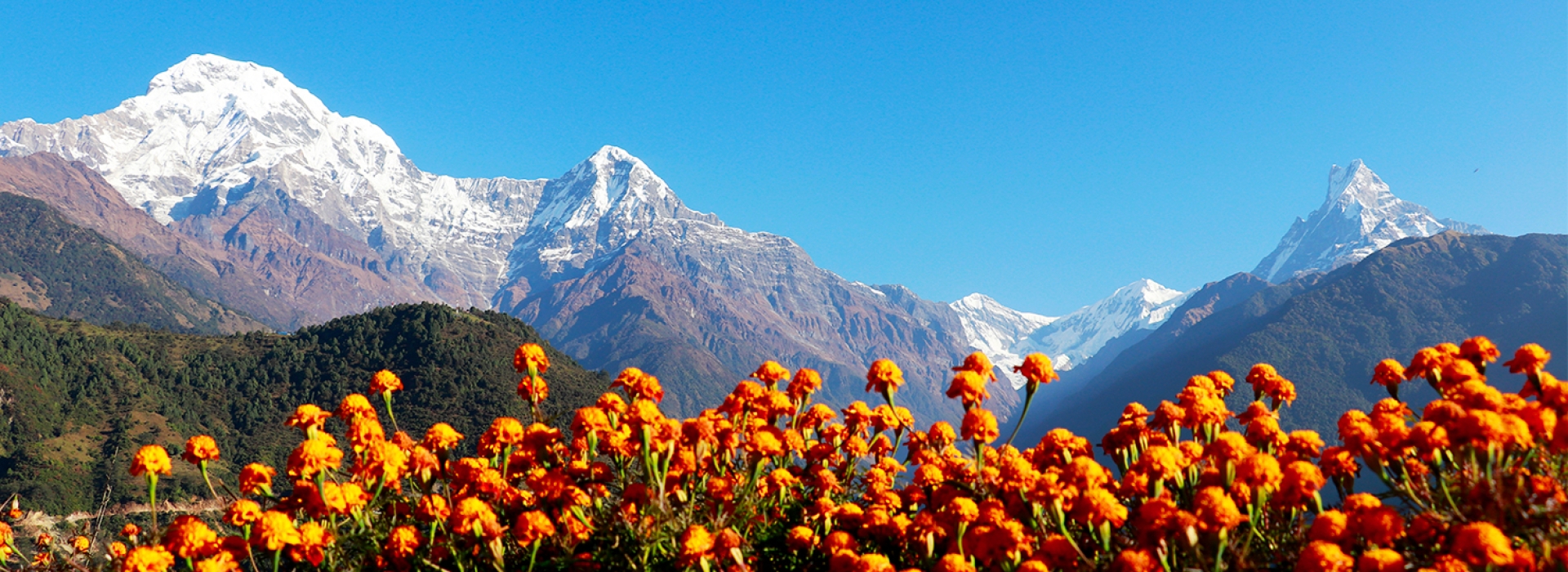
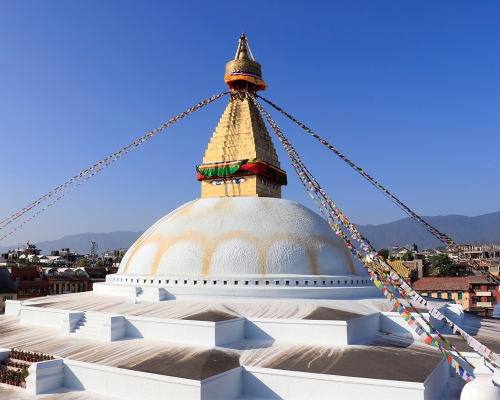
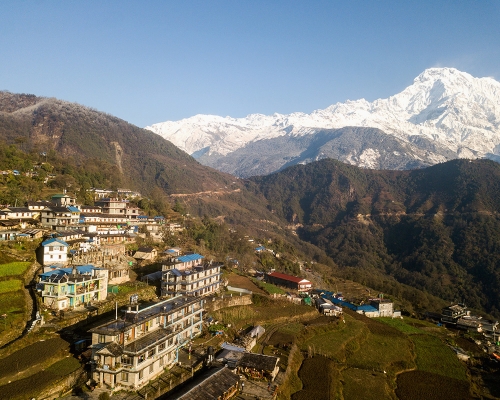
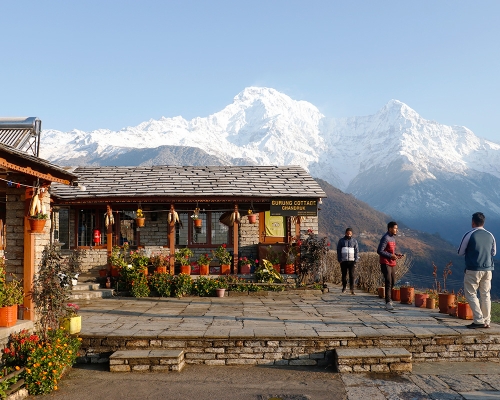
.jpg)
